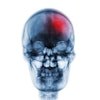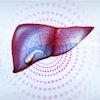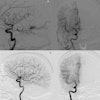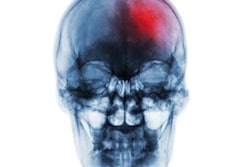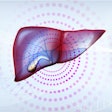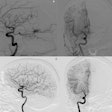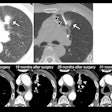Conventional imaging appears sufficient over advanced imaging as a first-line tool for selecting patients for endovascular thrombectomy, according to a study published August 28 in the European Stroke Journal.
The finding is from a comparison between CT perfusion and MRI versus standard noncontrast CT and CT angiography (CTA) among 268 stroke patients, with imaging selection making no difference in clinical outcomes, noted lead author Huanwen Chen, MD, of the National Institute of Neurological Disorders and Stroke in Bethesda, MD, and colleagues.
“We found that conventional or advanced imaging selection of EVT patients did not result in significant differences in 90-day clinical outcomes or rates of [symptomatic intracranial hemorrhage],” the group wrote.
Endovascular thrombectomy (EVT) for acute ischemic stroke due to basilar artery occlusion (BAO) is an emerging interventional procedure, with pooled data from clinical trials demonstrating overall treatment benefits for patients, the authors explained. Yet to date, whether selecting these patients with advanced imaging confers an advantage over conventional imaging is unclear, they added.
To address the knowledge gap, the researchers conducted a multicenter retrospective cohort study of BAO EVT patients treated from 2013 to 2022. Patients selected for EVT by advanced imaging (CT perfusion or MRI) were matched with those selected by conventional imaging using propensity score matching. The primary outcome was functional independence at 90 days, with other outcomes including bedridden state or death at 90 days and symptomatic intracranial hemorrhage (sICH).
Out of 268 patients included, 150 patients were indicated for basilar EVT by conventional imaging, 86 by CT perfusion, and 32 by MRI. Patients selected by advanced imaging were significantly older than those selected by conventional imaging (median age, 71 vs. 64) but were otherwise similar, the researchers noted.
Between the groups, there were no statistically significant differences in terms of 90-day functional independence, 90-day independent ambulation, 90-day bedridden state or death, or sICH, the group reported.
| Patient outcomes after EVT based on conventional or advanced imaging | |||
| Conventional imaging | Advanced imaging | p-value | |
| Functional independence | 39.4% (37/94) | 35.1% (33/94) | 0.65 |
| Independent ambulation | 47.9% (45/94) | 44.7% (42/94) | 0.84 |
| Bedridden state or death | 40.4% (38/94) | 44.7% (42/94) | 0.66 |
| Symptomatic ICH | 3.3% (3/91) | 5.7% (5/88) | 0.49 |
In addition, a subgroup analysis showed that the imaging modality used for patient selection also did not lead to difference in patient outcomes for those treated in the early (within 6 hours of stroke onset) or late (beyond 6 hours or unknown time of stroke onset) time windows.
“The optimal use of advanced neuroimaging modalities such as CTP and MR during acute stroke triage to select patients for reperfusion therapy has been a topic of debate,” the group wrote.
The researchers noted that it is possible that some patients who were selected for BAO-EVT may have undergone first-line conventional imaging that revealed concerning or uncertain findings. Thus, while the findings suggest that first-line conventional imaging may perform similarly well compared to advanced imaging, a clinical benefit of second-line advanced imaging for these patients cannot be ruled out.
“Future prospective studies are needed to investigate the role of advanced imaging modalities for BAO during acute triage, especially as a second-line modality for patients with equivocal or unfavorable conventional imaging findings,” the group concluded.
The full study is available here.


